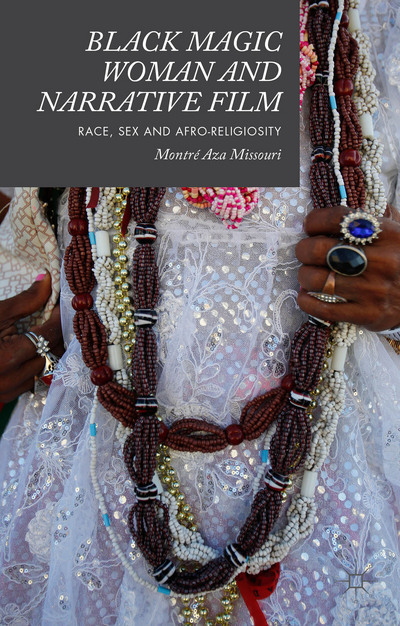Black Magic Woman and Narrative Film: Race, Sex and Afro-ReligiosityPosted in Books, Literary/Artistic Criticism, Media Archive, Monographs, Religion, Women on 2015-10-25 21:19Z by Steven |
Black Magic Woman and Narrative Film: Race, Sex and Afro-Religiosity
Palgrave Macmillan
July 2015
216 pages
Hardcover ISBN: 9781137454171
Ebook (EPUB) ISBN: 9781137454195
Ebook (PDF) ISBN: 9781137454188
Montré Aza Missouri, Associate Professor in Film
Howard University, Washington, D.C.
Contributing to emerging scholarship on representations of race, gender, sexuality and religion in film and media, Black Magic Woman focuses on the ‘tragic mulatto‘ stereotype that is conventionally portrayed as a character tormented by issues of racial and cultural ambiguity. Montré Aza Missouri explores the journey of the ‘mulatto‘ from ‘tragic’ to ’empowered’ through the character’s adherence to Yoruba-Atlantic religions such as Cuban Lucumí, Puerto Rican Santería and American Voodoo. From this religious transformation, the ‘tragic mulatto’ becomes the Black Magic Woman, a signifier of a New World cultural identity.
Table of Contents
- Acknowledgements
- Introduction – From ‘Tragic Mulatto’ to Black Magic Woman: Race, Sex and Religion in Film
- Chapter 1. Womanism and Womanist Gaze
- Chapter 2. Beauty as Power: In/visible Woman and Womanist Film in Daughters of the Dust
- Chapter 3. Passing Strange: Voodoo Queens and Hollywood Fantasy in Eve’s Bayou
- Chapter 4. I’ll Fly Away: Baadasssss Mamas and Third Cinema in Sankofa
- Chapter 5. Not Another West Side Story: Nuyorican Women and New Black Realism in I Like It Like That
- Chapter 6. It Is Easy Being Green: Disney’s Post-Racial Princess and Black Magic Nostalgia in The Princess and the Frog
- Conclusion
- Notes
- Filmography
- Bibliography
- Index



